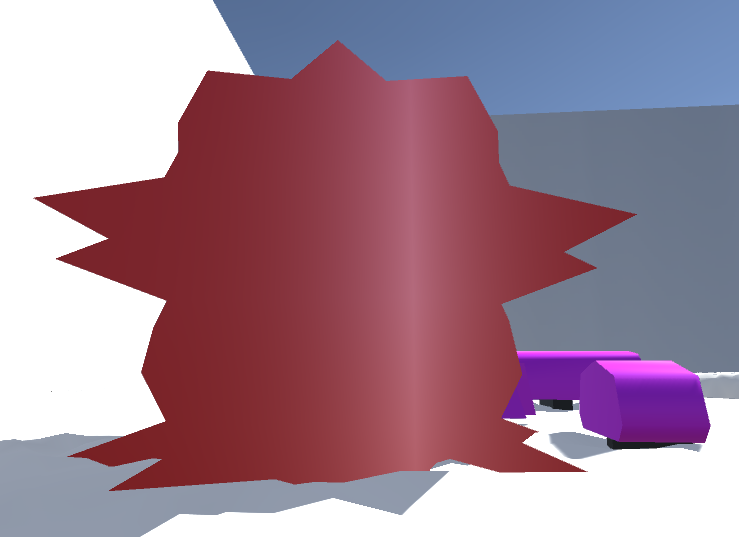Unity uses two programming languages: C# and JavaScript. I use C# because I like strongly-typed languages. I want to see as many mistakes at compile-time as possible. But Tracery (which I used to generate Burning Man Camp names) is written in JavaScript. Can I just copy the files in to my project’s directory structure? No! Unity finds several errors in files that work just fine in a web browser. Searching online reveals two people that ported Tracery to C# specifically for use in Unity. Both authors caution that these ports are completely unsupported, but that’s good enough for me. I assign a name to each city block, but displaying that name to the user requires learning how to use Unity’s UI features. I don’t want to deal with that hassle, so I switch tasks!
The Temple was a giant blank cylinder, and the Man was standing on a similarly boring box. I create a Lathe algorithm to replace both. The Lathe draws some line segments from bottom to top, then rotates that outline around the Y-axis, kinda like a vase. This is quite-low-level compared to most of what I’ve built. I’m not using built-in primitives or importing meshes I built in a 3D editor. I’m creating the object one piece at a time while the game is running. Not only do I have to write nested loops to place each vertex, I have to remember what order I created them, because the triangles are one giant list of references to the one giant list of vertices. Speed is important at this level, so I don’t get the luxury of a big tree structure of objects. After writing some triangles backwards, and forgetting a few numbers, I get a shape!

What is this? The light acts like it’s completely flat! I had missed two things.
- Unity stores only one normal per vertex, so if two triangles share a vertex, Unity will smooth the join between those triangles. I want the angular, low-poly look, so I don’t want any triangles to share vertexes. A quick sketch shows that each vertex borders six triangles, so I have to edit my vertex generation loop so it creates six times as many verticex! Now the triangle creation loop needs to use each of those vertices exactly once. Yikes!
- The second step is to call the RecalculateNormals() function. Much easier!

So much better! You’ll notice that this temple is spikier than a vase. That’s “star mode.” I bring a piece of code over from my bodypaint generator that reduces the radius of every other vertical row of vertices.
After finishing this project, I am ready to tackle some UI work. People won’t enjoy even the coolest game if they don’t know how to play, so I need to explain myself. I add a title screen with a list of controls and a bit of story. This is a game about copying photo.s. The original code name was “Art Fraud” But now i’m having second thoughts. Taking photos in a magical, beautiful place seems so joyful and positive. Do I really want to flavor it as theft and subterfuge? As a compromise, I let the user select Light or Dark stories. There’s no mechanical difference, but the little paragraph re-contextualizes why one has these photos, and why one wants to re-create them.
